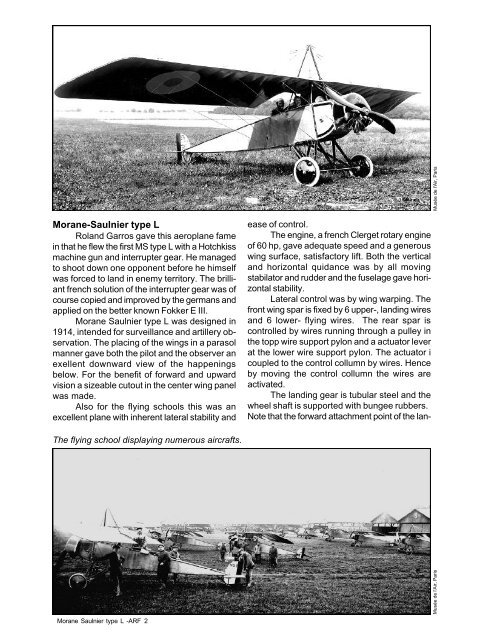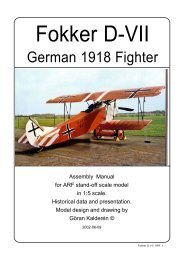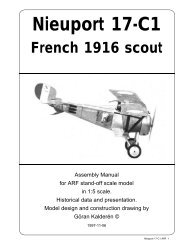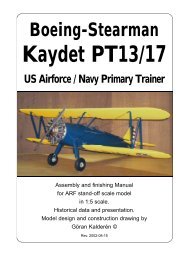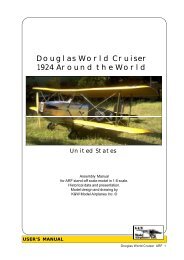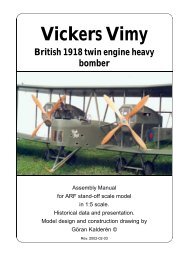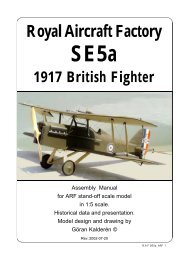Download PDF Manual - Macca's Vintage Aerodrome
Download PDF Manual - Macca's Vintage Aerodrome
Download PDF Manual - Macca's Vintage Aerodrome
You also want an ePaper? Increase the reach of your titles
YUMPU automatically turns print PDFs into web optimized ePapers that Google loves.
Morane-Saulnier type L<br />
Roland Garros gave this aeroplane fame<br />
in that he flew the first MS type L with a Hotchkiss<br />
machine gun and interrupter gear. He managed<br />
to shoot down one opponent before he himself<br />
was forced to land in enemy territory. The brilliant<br />
french solution of the interrupter gear was of<br />
course copied and improved by the germans and<br />
applied on the better known Fokker E III.<br />
Morane Saulnier type L was designed in<br />
1914, intended for surveillance and artillery observation.<br />
The placing of the wings in a parasol<br />
manner gave both the pilot and the observer an<br />
exellent downward view of the happenings<br />
below. For the benefit of forward and upward<br />
vision a sizeable cutout in the center wing panel<br />
was made.<br />
Also for the flying schools this was an<br />
excellent plane with inherent lateral stability and<br />
The flying school displaying numerous aircrafts.<br />
Morane Saulnier type L -ARF 2<br />
ease of control.<br />
The engine, a french Clerget rotary engine<br />
of 60 hp, gave adequate speed and a generous<br />
wing surface, satisfactory lift. Both the vertical<br />
and horizontal quidance was by all moving<br />
stabilator and rudder and the fuselage gave horizontal<br />
stability.<br />
Lateral control was by wing warping. The<br />
front wing spar is fixed by 6 upper-, landing wires<br />
and 6 lower- flying wires. The rear spar is<br />
controlled by wires running through a pulley in<br />
the topp wire support pylon and a actuator lever<br />
at the lower wire support pylon. The actuator i<br />
coupled to the control collumn by wires. Hence<br />
by moving the control collumn the wires are<br />
activated.<br />
The landing gear is tubular steel and the<br />
wheel shaft is supported with bungee rubbers.<br />
Note that the forward attachment point of the lan-<br />
Musée de l'Air, Paris Musée de l'Air, Paris


